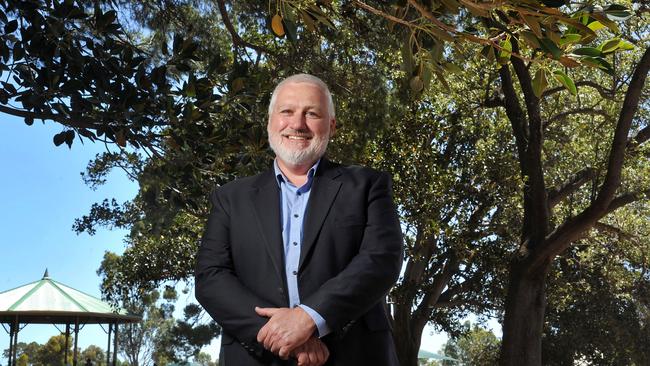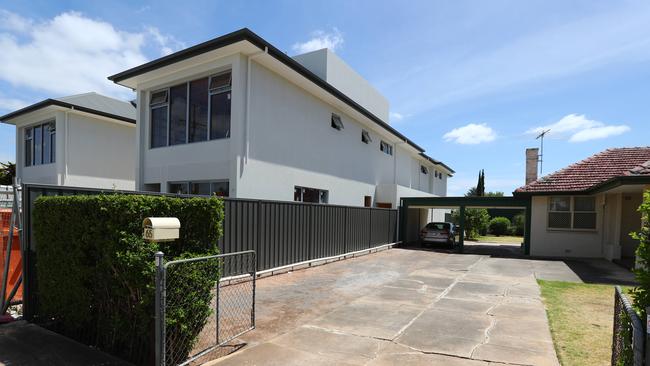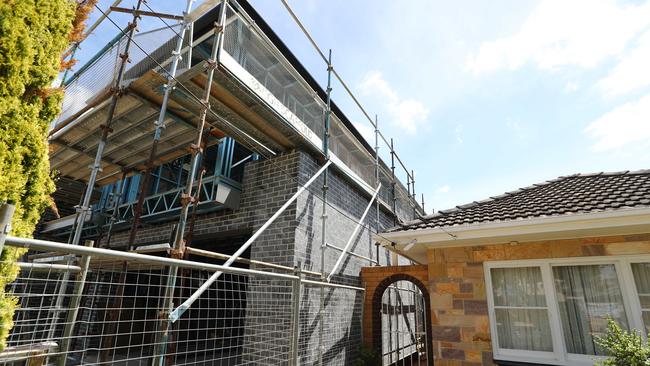Adelaide property subdivision: Interactive map shows urban infill across our suburbs
ARE subdivisions turning our suburbs into “urban deserts”? One Adelaide mayor says so — have a look at this map and decide for yourself.

SA News
Don't miss out on the headlines from SA News. Followed categories will be added to My News.
- Stricter design standards for Prospect apartments
- Power blackouts blamed on high-density housing
- Lord Mayor laments empty North Tce buildings
THE mayor of an Adelaide council which is at the centre of a State Government-led push to higher density living has attacked developers warning an increase in housing subdivisions is turning neighbourhoods into “urban deserts”.
Campbelltown Council Mayor Simon Brewer says parking congestion, dwindling open space, and pressure on stormwater systems and electricity supply have been a consequence of urban regeneration sweeping through his area in Adelaide’s north east.
“The massive amount of hard surfaces covering our land is just a highway to hell,” he said.
“Apart from the storm water issues, the place is becoming an urban desert as there is no place to plant any trees.
“Developers don’t have to contribute to any of this — they take the money and run.”
He said many of the problems can be attributed to developers “motivated by profit” who are buying land on an “ad hoc basis” and developing in “isolation for their maximum return”
“As a result, we see homes covering perhaps 90 per cent of a block whereas it was once 20 per cent, with garages that when you drive a car in you can’t open the doors and no backyard for a shed,” he said.
SUBDIVISIONS IN OUR SUBURBS
* This map shows subdivision applications that have been finalised in the past two years or are currently awaiting assessment.
His comments come as an investigation by The Advertiser and Messenger reveals that in the past two years council have considered 7000 residential subdivision applications with suburbs across Campbelltown Council featuring prominently in the figures.
Campbelltown was top for subdivision applications with 123, while neighbouring suburbs of Magill, Newton, Paradise and Hectorville in the top 30 most popular areas.
It follows zoning changes introduced in Cambelltown Council allowing properties to be built as small as 150 sqm.
Adelaide’s western and southwestern suburbs also figured prominently in the data with Seaton, Warradale, Glengowrie and Plymtpon Park among the popular areas for subdivision.
Mr Brewer did not think the scale of what was being built was the problem, rather the quality of design.

“The house efficiencies are so bad that they require large scale heating and cooling, placing great pressure on the local power grids,” he said.
Urban Insititute of Australia (SA) chief executive Pat Gerace, responding to Mr Brewer, said that builders and developers build homes that buyers want and “what is within the rules”.
“It’s councils that are responsible for core infrastructure for stormwater, open space and the look and feel of neighbourhoods,” he said.
What we really need from Councils is leadership in shaping their neighbourhoods to better suit the needs of consumers, not blame developers that they haven’t done their job for them.”
The Messenger revealed this month that SA Power Networks had blamed energy demand caused by high-density housing during extreme hot weather for several blackouts in the Prospect area in the past year, including two blackouts in January.
The paper also reported that Planning Minister John Rau had approved stricter design standards on new apartment blocks on Prospect, Churchill and Main North Rd following concerns over the quality of high-rise apartments.

Mr Brewer said some of the upside was that the increased housing provided increased rates revenue, improved business diversity and viability and increased property values for those looking to sell.
He said some residents also support small block sizes with the council backing down on a proposal to increase minimum block sizes from 350 sqm to 500 sqm following community “push back”.
Real Estate Institute of SA president Alex Ouwens said the urban consolidation was reflective of a changing demographic.
“Buyers want to have a lower maintenance lifestyle rather than holding onto a larger block of land,” he said.
“For a downsizer or first homebuyer a new home doesn’t have the issues of an older home”
“Fitting more people into a suburb can create traffic issues and so on, but Adelaide can handle it better than the eastern states.”

West Torrens Council chief executive Terry Buss said the subdivision boom lined up with the State Government’s push to increase housing density across inner-city districts.
“It reduces the impact of urban sprawl and also enables residents and communities to be more environmentally sustainable by having to travel less for day-to-day services,” Mr Buss said.
TOP 30 SUB-DIVIDED SUBURBS
Campbelltown — 123
Seaton — 95
Ingle Farm — 91
Warradale — 82
Morphett Vale — 71
Adelaide — 71
Plympton — 70
Magill — 71
Rostrevor — 65
Glengowrie — 64
Flinders Park — 60
Parafield Gardens — 57
Findon- 57
Woodville West — 57
Enfield — 56
Windsor Gardens — 54
Clearview — 53
Paradise — 52
Greenacres — 51
Modbury- 50
Paralowie — 50
Plympton Park- 49
Holden Hill — 49
South Plympton — 48
Hectorville — 47
Christies Beach — 47
Prospect- 47
Clovelly Park — 46
Dover Gardens — 46
*Data supplied by the SA Planning Department representing subdivision applications under assessment or where a decision has been made by councils for the period covering January 2016-18.
Figures do not include applications for boundary realignments or readjustments.


